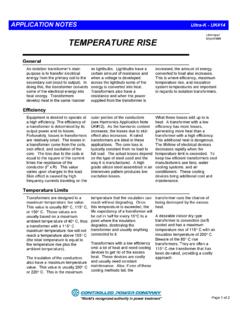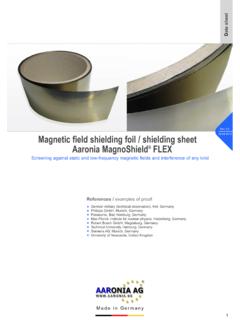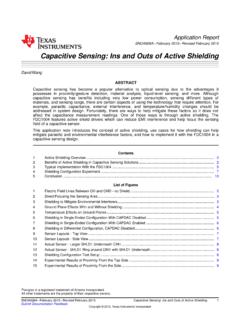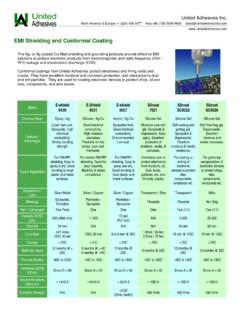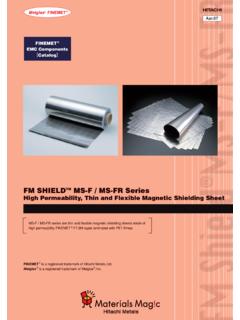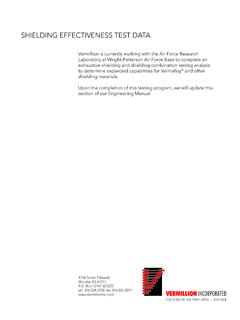Transcription of Mrishielding.doc MRI Suite Shielding Requirements
1 MRI Suite Shielding Requirements General Magnetic Resonance Imaging (MRI) systems use radio frequency (RF) waves to help construct soft tissue images. It is very important to prevent stray RF waves from entering the MRI Suite . Failure to do so could result in image artifacts, which could lead to limited diagnostic value and image retakes. RF Shielding Radio Frequency (RF) Shielding works to prevent exterior RFI (Radio Frequency Interference) from negatively affecting the operation of the MRI and the digital image being produced. MRI machines have highly sensitive sensors that pick up minute RF signals. These sensors can be overridden by external RF noise generated by a variety of electronic applications, thus the need for RF Shielding . An RF shield encompasses all six sides of a room.
2 The walls, floor and ceiling are all connected and all create an RF Shield. The design and construction challenge with RF enclosures occurs when addressing the need to connect or penetrate certain necessary applications: the RF door to gain entry, an RF window to see inside, an RF Waveguide Air Vent (WGAV) penetration for HVAC Requirements , and an electrical filter for electrical wiring. Any material that conducts electrical current can be used as an RF shielded enclosure. Galvanized steel and copper have proven over the course of time to work better, are cost effective, and provide the design flexibility necessary for today s architectural applications. The Shielding effectiveness of an RF shield is measured in dB s. This unit-less measurement uses the same logarithmic scale used on a seismic Richter scale.
3 Hence, an RF shield that performs at 70 dB, versus one that is working at 80 dB, or 90 dB, is 10 times or 100 times better respectively. All MRI scanners operate between 5 MHz and 128 MHz, which is the frequency at which the sensor picks up the minute RF signal. Although RF enclosures shield at a variety of frequencies, the sensor frequency is used in testing to insure that the RF enclosure is performing for that particular MRI. APPLICATION NOTES SuiteLITE - # 02 15 June 2009 Magnetic Shielding As previously indicated, MRI machines are available in a variety of sizes and field strengths. The field strength is the strength of the magnet at its isocenter, or the exact center of the magnetic field measured in Tesla.
4 As the magnet s field and site location varies, the requirement for magnetic Shielding varies. The magnetic Shielding varies per magnet and per site, depending upon these two criteria. As the field strength increases, the size of the magnetic field grows; hence, a higher field magnet ( or ) will have a greater influence on its surrounding area. As the field strength decreases ( ) the surrounding area has a greater influence on the magnet s function. It is vital to proper imaging that the magnet s homogeneity does not vary as it is tuned to PPM, or parts per million. Hence, a large moving steel mass with a magnetic field can interfere with the magnet s ability to image, as it can distort the magnet s uniformed magnetic field. This application note has been reprinted and used with the author s permission.
5 Author Stefan Hipskind represents Braden Shielding Systems. For more information on shielded MRI rooms, please contact Stefan directly at: (918) 624-2888 or visit the website.

